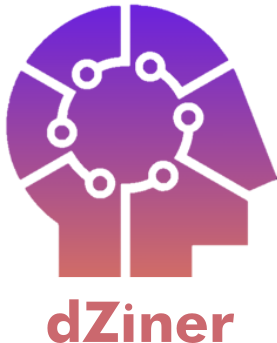dZiner#
An agentic framework for rational inverse design of materials by replicating and incorporating the expertise of human domain experts across various design tasks and target properties.
Human-in-the-loop Inverse Design#
Collaborative efforts between a human expert and AI agents hold significant promise. In the case of molecular design for WDR5 ligands, we examined human guidance to refine the modifications based on docking scores and structural generation.
Closed-loop Inverse Design#
We applied dZiner to the rational inverse design of likely synthesizable organic linkers for metal-organic frameworks with high CO2 adsorption capacity at 0.5 bar of pressure. These MOFs come with pcu topology and three types of inorganic nodes: Cu paddlewheel, Zn paddlewheel, and Zn tetramer (three most frequent node-topology pairs in the hMOF dataset). Design constraints such as keeping molecular weight lower than 600 g/mol and excluding certain potentially unstable functional groups (nitrosylated, chloro-, fluoro- amines) are simply added to the model as natural language text.
Benchmarks#
How Can I Use dZiner for My Own Materials Inverse Design Problem?#
dZiner can work with different textual representation for materials. You can even apply your own surrogate model to your own materials inverse design problem. Here are some example notebooks that can help you get started:
Citation#
For more details checkout preprint and if you are using our methodology, please consider citing us using the citation below:
@misc{ansari2024dzinerrationalinversedesign,
title={dZiner: Rational Inverse Design of Materials with AI Agents},
author={Mehrad Ansari and Jeffrey Watchorn and Carla E. Brown and Joseph S. Brown},
year={2024},
eprint={2410.03963},
archivePrefix={arXiv},
primaryClass={physics.chem-ph},
url={https://arxiv.org/abs/2410.03963},
}


